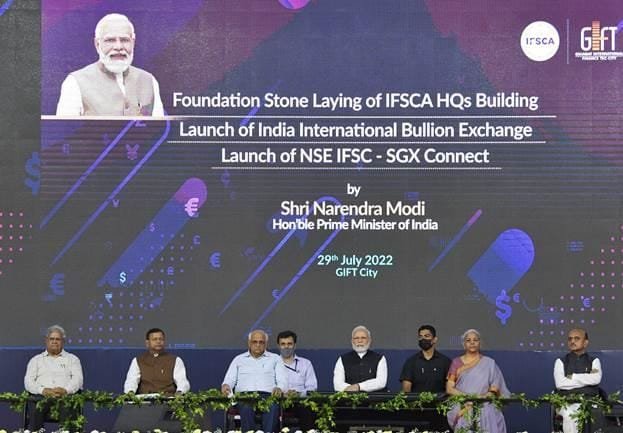Banking faces challenges, yet ratings unchanged

The economic risks facing financial institutions in India (BBB-/Stable/A-3) have increased amid structural and cyclical challenges that Indian companies face, says a report by S&P Global Ratings.
“Reflecting these higher risks, we now apply higher risk weights in our analysis of the capital that the financial institutions require in case of any unexpected losses.
“However, our ratings on all financial institutions in India remain unchanged because we consider that all these entities remain capitalized in line with their existing stand-alone credit profiles and the ratings,” it said in a report “Banking Industry Country Risk Assessment: India”.
The credit quality of Indian companies has deteriorated sharply in the past few years amid tepid domestic industrial activity, weak commodity prices, project execution woes, subdued profitability, and high leverage in some pockets, it noted.
In particular, the metal sector had 34.4% stressed loans and the infrastructure sector had 16.7% stressed loans at March 31, 2016, according to S&P.
The Indian iron and steel industry suffers from low capacity utilization, weak demand and prices, competition from exports given the global steel glut, and high leverage.
The industry benefits from the government’s import protection mechanism (which sets a minimum import price and anti-dumping duty) and the recent surge in global steel prices. We believe a reduction in leverage will require further improvement in demand, capacity utilization, and continuous pricing power.
The problems facing the power sector include the unavailability of fuel, state electricity boards’ (SEBs) weak financial profiles, and some unviable power purchase agreements (PPAs).
The availability of coal and gas has improved of late through government measures and SEB leverage is reducing as state governments take over (or guarantee) their debts.
However, further improvements in the health of SEBs require an increase in tariffs and a reduction of transmission losses.
Meanwhile, independent power producers need to see fresh PPAs, the resolution of unviable PPAs, and a low plant load factor.
Demonetization, while a long-term positive, will have a transitory impact on growth in the short term and could hurt asset quality.
Indian banks’ non-performing loans (NPLs) and standard restructured loans have increased to 11.5% of total loans at the end of fiscal 2016 (March 31).
The provisioning is low, averaging 50-55% for rated banks.
Despite increased economic risks, the banking sector of India remains in group ‘5’ under our Banking Industry Country Risk Assessment.
“In our opinion, India’s low-income economy constrains its economic resilience. We expect GDP per capita to remain low at US$1,703 for the fiscal year 2017 (ending March 2017). However, improvements in policymaking continue to boost the medium-term prospects for India’s economic and fiscal performance,” said S&P.
India’s growth outperforms its peers. “We assess the risk of economic imbalances building up as low,” it said.
Nominal credit growth has moderated over the past few years and inflation-adjusted residential real estate prices haven’t increased.
India’s credit risk remains very high, with weak foreclosure laws accentuating challenges despite moderate private sector debt.
In terms of industry risk, Indian banks benefit from high levels of stable core customer deposits, which limit dependence on external borrowings.
The banking system’s good franchise, extensive branch networks, and large domestic savings support the deposit base.
“In our view, banking regulations are broadly in line with international standards and the record of regulatory oversight has been moderately successful.
“We expect efficient banks with higher profitability, capitalization, and a focus on digital banking to gain market share over others.
“We expect competition from niche banks to be limited in the near term given the gestation period involved in creating franchise and the limited scope of operations and profitability of these banks to start with,” said S&P.
Nevertheless, directed lending and the dominance of government-owned banks create some market distortion, in S&P view.
India’s economic risk trend, as it affects the banking sector, is stable, in S&P opinion.
While improvements in policymaking have raised prospects for a stronger economic and fiscal performance, a material improvement in asset quality will require a further pickup in industrial demand, deleveraging of corporate balance sheets, resolution of problems in stressed sectors (particularly infrastructure and metal and mining), and further pass-through of lower interest rates to borrowers.
“We expect risk from economic imbalances to be low in the next 12 months. We view the trend for industry risk as stable.”
The Reserve Bank of India (RBI) is strengthening regulations and the supervision of banks and non-banking finance companies.
“We expect private sector banks and top-tier public sector banks with better franchises, profitability, and capitalization to increase their market share, and the impact of niche banks is likely to be limited in the near term.
“In our view, the Indian banking sector is underpenetrated, with a large section of the population not having access to bank credit, deposits, investments, and other banking services,” S&P said.
The increase in growth in India’s nominal GDP, along with a high savings rate, should provide room for efficient banks to grow.
Bank deposits would benefit due to demonetization, though not all inflows will remain in the banking system on a permanent basis. fii-news.com
Read all the news and developments pertaining to the Indian banking and finance sector.









